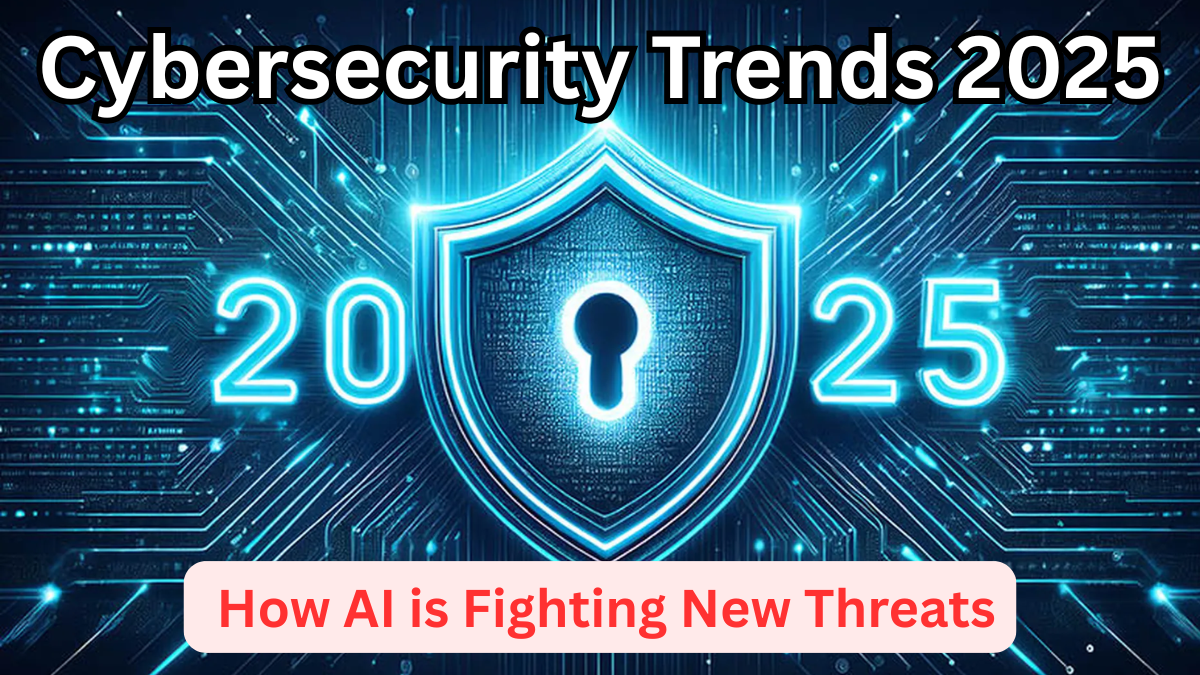The digital landscape is evolving faster than ever, and so are cyber threats. As we move into 2025, the combination of Artificial Intelligence (AI) and cybersecurity is redefining how organizations safeguard their systems. From predicting potential attacks to automating responses, AI has become a game-changer in the fight against cybercrime.
This article explores Cybersecurity Trends 2025 and how AI is playing a crucial role in addressing emerging threats.

Why Cybersecurity Needs AI More Than Ever
Traditional cybersecurity methods often fail to keep up with the speed and complexity of modern cyberattacks. Hackers are using AI-powered tools, making attacks smarter and harder to detect. This calls for an equally intelligent defense system.
Key reasons why AI is critical in cybersecurity today:
-
Real-time threat detection – AI can spot unusual activities instantly
-
Predictive analysis – Helps prevent attacks before they occur
-
Automated response – Quick action reduces potential damage
-
Adaptive learning – AI systems improve with every new threat
Top Cybersecurity Trends 2025
Here are the major Cybersecurity Trends 2025 that organizations need to focus on:
| Trend | Impact |
|---|---|
| AI-driven Threat Detection | Faster identification of suspicious activities |
| Zero Trust Framework | Ensures continuous authentication and verification |
| Cloud Security Enhancements | Strengthening data protection in hybrid and multi-cloud environments |
| Quantum-ready Security | Preparing encryption methods for the quantum era |
| AI vs. AI Threats | Combating AI-powered attacks with AI defense mechanisms |
How AI is Combating New Threats
AI is not just a tool for detecting cyberattacks—it’s actively helping organizations stay ahead of hackers.
Some innovative ways AI is enhancing cybersecurity include:
-
Behavioral analysis: Identifying unusual user activity to detect potential breaches
-
Threat intelligence sharing: AI systems collaborate across networks for faster response
-
Deep learning models: Predicting and blocking evolving cyberattack patterns
-
Automated patching: Fixing vulnerabilities before attackers can exploit them
By countering AI threats with AI-powered defense strategies, businesses can significantly reduce their risk exposure.
Challenges in Using AI for Cybersecurity
While AI offers immense potential, it also brings challenges:
-
AI threats evolving: Hackers are using AI to create more complex malware
-
False positives: AI systems sometimes misinterpret normal activities as threats
-
High costs: Advanced AI cybersecurity tools can be expensive for small businesses
Preparing for the Future
Organizations must invest in AI-based security infrastructure and skilled cybersecurity professionals. The key lies in balancing automation with human oversight to ensure accurate and ethical use of AI.
FAQs
1. What are the biggest Cybersecurity Trends 2025?
AI-driven threat detection, Zero Trust frameworks, quantum-ready encryption, and stronger cloud security are among the top trends for 2025.
2. How is AI helping fight AI threats?
AI uses machine learning, behavioral analysis, and automated responses to detect and neutralize AI-powered cyberattacks in real time.
3. Can small businesses afford AI-based cybersecurity?
Yes. While advanced systems can be costly, many affordable AI-powered cybersecurity solutions are available for small and medium enterprises.
4. What’s the role of humans in AI-powered cybersecurity?
Humans provide oversight, ethical guidance, and decision-making to complement AI’s automated functions, ensuring a balanced defense strategy.
Click here to learn more
